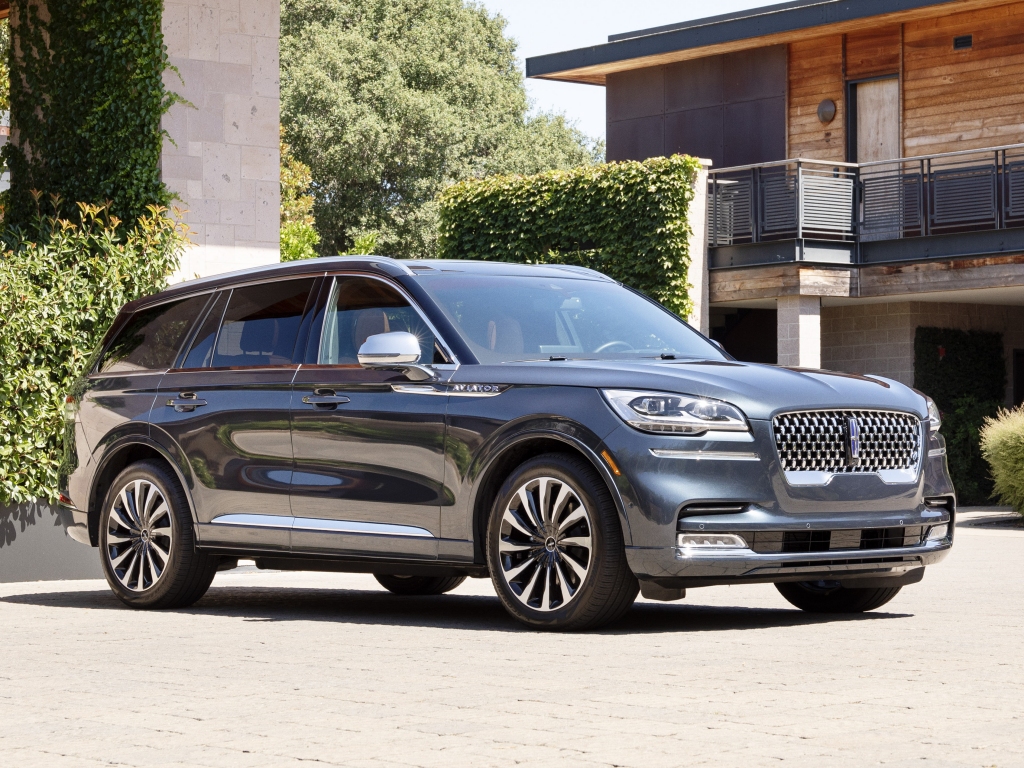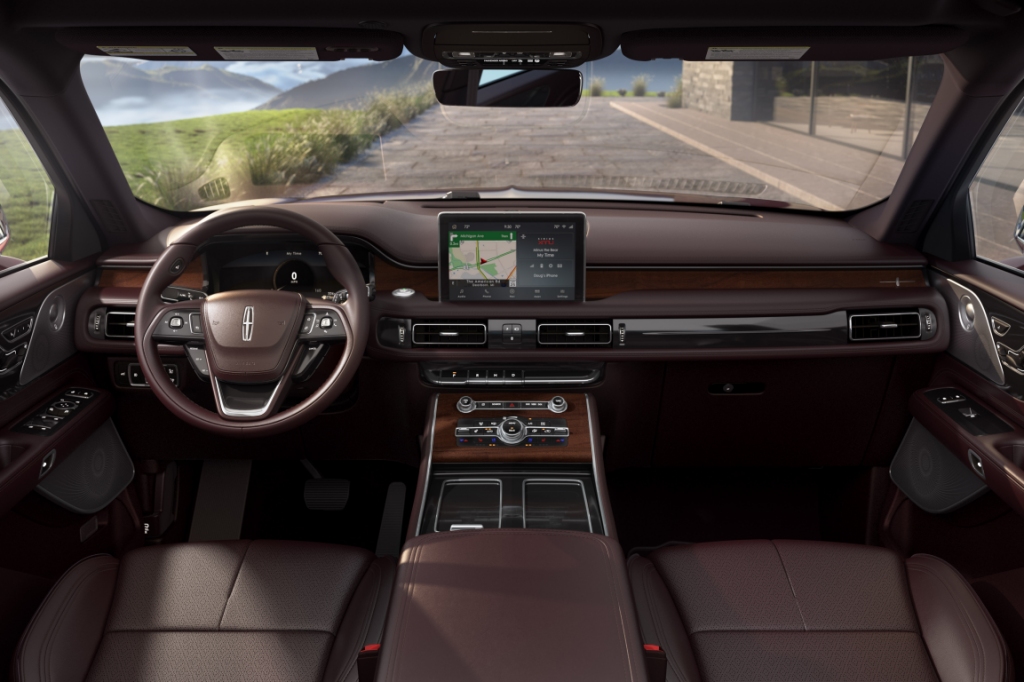First drive: 2020 Lincoln Aviator in California USA
For most of its 102-year history, Lincoln has churned out solely sedans and coupes, but over the past decade the marque has become a purveyor of predominantly SUVs – a shift that’s in line with changing buyer tastes. Forget the gargantuan Continental land yachts of yesteryear, the lion’s share of Lincoln’s sales volume today comes from high-riding wagons, and these now represent two-thirds of the brand’s model line-up.
The latest entrant from Ford’s upmarket offshoot is the seven-seat Aviator, which will slot in between the Nautilus and Navigator when it launches here in late-October, subsequently taking the fight to the Infiniti QX60, Lexus GX460, Volvo XC90, Land Rover Discovery, Range Rover Sport, Audi Q7, BMW X5 and Mercedes GLE.
The initial line-up will comprise the Aviator Reserve (priced from Dhs 262,415 plus VAT) and the Aviator Presidential (from Dhs 288,982 plus VAT), although entry pricing will be lowered in mid-2020 when the base model is added to the range.

The Aviator is underpinned by Ford’s latest-gen rear-drive/all-wheel-drive platform, and this architecture also forms the basis for the 2020 Explorer revealed earlier this year (although the Lincoln gets a unique front and rear suspension set-up). On paper, this hardware looks competitive against the opposition as the sophisticated mixed-material platform (it’s predominantly steel) enables the Lincoln to tip the scales at a not excessively lardy 2,224 kg in all-wheel-drive form. The rear-drive version is about 50 kg lighter.
Propulsion for the vehicle comes from a similarly cutting-edge powertrain that mates Ford’s new 3.0-litre twin-turbo EcoBoost V6 with a 10-speed auto that’s also used by the likes of the Mustang and V8 versions of the Chevrolet Camaro. It’s a potent combo, with the seamless automatic transmission smoothly deploying the V6 motor’s 400 hp/562 Nm wallop.
Lincoln doesn’t quote any performance stats, as company execs say it’s against the brand’s policy, but our seat-of-the-pants stopwatch suggests the Aviator sprints from standstill to 100 kph in about 6 seconds. It’s surprisingly rapid, but more on this shortly.

The Aviator comes with a raft of driver aids – including adaptive cruise control, Evasive Steering Assist (helps you avoid a collision) and Active park assistant plus (takes over the task of parallel or perpendicular parking) – and there’s the optional availability of ‘Air Glide’ adaptive air suspension and ‘Road Preview’. The latter feature works along the same lines as Mercedes-Benz’s Magic Body Control by using the front-facing camera to read the road surface ahead and prepare the suspension to iron out bumps and tarmac imperfections up to 20cm high.
The Aviator’s adaptive suspension also uses 12 sensors that constantly monitor vehicle motion, body movement, steering, acceleration and braking, subsequently making setting adjustments up to 100 times per second. The suspension’s ‘pothole mitigation’ can sense when a wheel is dropping into a severe dip and stiffens the shock absorber to reduce the amount of drop, lessening the harshness of a tyre strike.
So much for the theory. The good news is that all this tech adds up to a package that exceeds expectations out in the real world. I’ve already touched on the efficacy of the EcoBoost V6/10-speed auto, and there’s not much to fault in this powertrain, even if it doesn’t quite match the silky smoothness of a BMW six-pot. There’s ample pulling power both off the mark and on the go – far more than you might expect of a leather-lined 2.2-tonne chariot that stands almost 1.8m tall and stretches just under 5.1m from bumper to bumper.

There’s a decent level of refinement, too, as both wind and road noise well suppressed, while the ride quality served up by the Air Glide suspension is as supple as that of its Euro competitors. A cushy ride is something you might take for granted in an American offering, but what comes as a surprise is how taut and composed the Aviator feels, even when you’re hurling it across winding mountain roads. Far from being the lumbering behemoth that large American SUVs have traditionally been, the Aviator steers with precision and crispness, and it doesn’t turn into a soggy, understeering mess when pushed hard.
Climbing into the vehicle or loading cargo into it is simplified as the Air Glide suspension lowers the car on approach. Conversely, it raises the vehicle in ‘Deep Conditions’ (ie Off-Road) mode, although we didn’t get to sample this on our tarmac-only drive route.
The Aviator’s cabin is a pleasant place to be as the seats are comfortable and offer enough lateral support to hold you in situ during spirited driving. For the second row you can specify a pair of captain’s chairs (which reduces seating capacity to six) or a three-seat bench. The cockpit layout with its wide horizontal surfaces also gels well, although the 10.1-inch infotainment touchscreen isn’t particularly well integrated into the centre console. It basically just sits atop the dash and doesn’t retract when not in use.

Other gripes? The Aviator’s otherwise opulent ambience is let down by the cheap hard plastic used for the lower half of the inner door trims and transmission tunnel. And while access to the third-row bench isn’t overly complicated, the seats are set very low, which means your knees end up higher than your derriere once you’re plonked down in there. It’s fine for the youth brigade, but no adult would want to be banished to the third row for an interstate journey.
Cargo space is decent but by no means class leading as you can stash 518 litres of stuff with all seats in place, or up to 1,184 litres if you fold down the third-row chairs. The Aviator has an optional ‘Phone As a Key’ feature that enables you to use your smartphone to access the vehicle. It allows you to lock and unlock, open the liftgate and, most importantly, start and drive the car – all without needing to have a traditional key fob bulging in your pocket. You can also use this feature to activate the air-con and entertainment settings, as well as recalling your individual preferences for adjusting seat, side mirrors and steering column positions.

Styling is always a highly subjective area, so we’ll leave you to arrive at your own conclusions about whether or not the Aviator is pleasing to the eye. Our view is that the big Lincoln has well-resolved proportions and a decent stance on the road, especially on the optional 22-inch rims that our test car was riding on. The Aviator certainly has visual presence and isn’t likely to be mistaken for anything other than what it is.
The high starting price means the Aviator is no bargain-basement special, but this spend does get you a well-engineered SUV that offers plenty of bang for your buck. The newcomer is certainly worthy of consideration if you’re in the market for a large luxo SUV, even if the Lincoln brand wasn’t formerly on your radar.
For prices and specs, visit the Lincoln buyer guide.
Photos by Lincoln.










Comments
Leborde
2 200 kg to carry a payload of 100 kg or less 95% of the time; speaking of efficiency…
Amernath
How well do you think this suv can go dune-bashing? Does the ‘deep conditions’ mode really help?
Gautam Sharma
Most vehicles of this genre have limited off-road ability and the wheel/tyre packages they’re fitted with aren’t suited to heavy-duty off-roading. So, in short, I wouldn’t be going dune bashing in the Aviator
osama
is it 8 seats or not